The first ‘L’ began revenue service on June 6, 1892, when a small steam locomotive pulling four wooden coaches carrying a total of 27 men and 3 women departed the 39th Street station and arrived at the Congress Street Terminal 14 minutes later, over tracks that are still used by the Green Line.

Construction started for the Lake Street elevated train tracks on Market Street, near Madison, in 1896. — Chicago History Museum
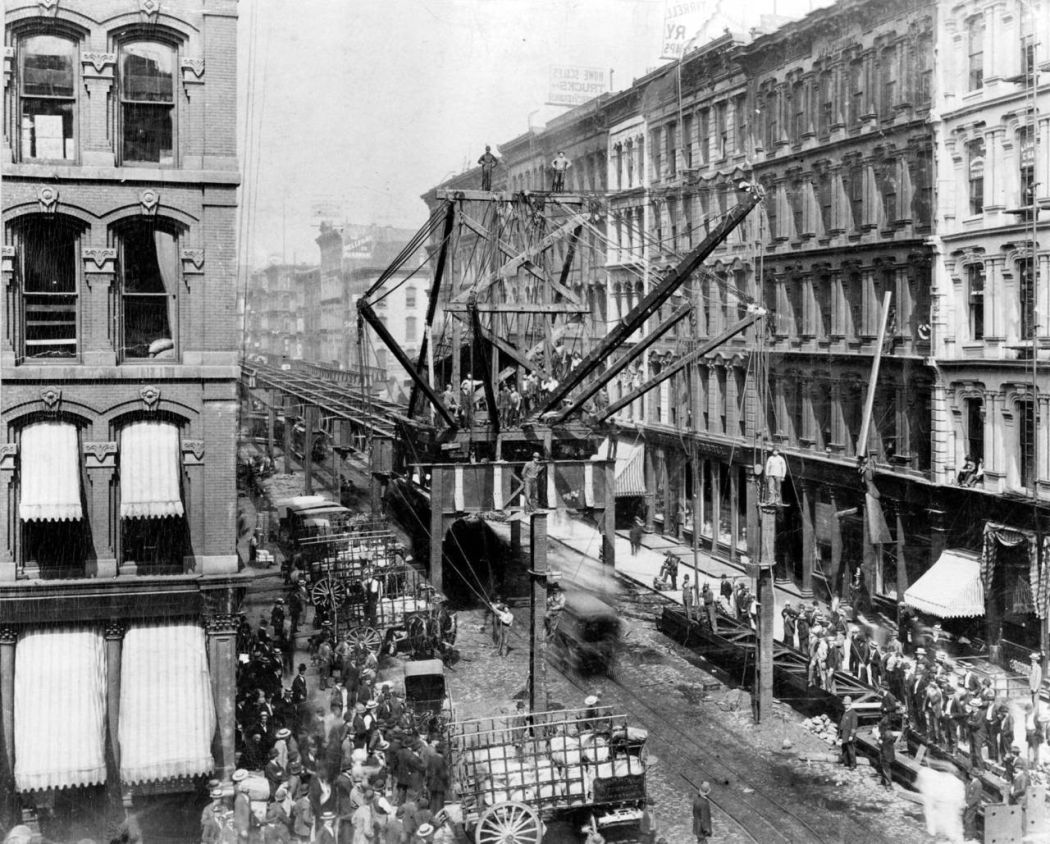
Lake Street, looking west from Wabash Avenue, in 1896 when the “L” was being built. C. H. Cook received $50 dollars for this picture, printed in the Tribune. — Chicago Tribune historical photo
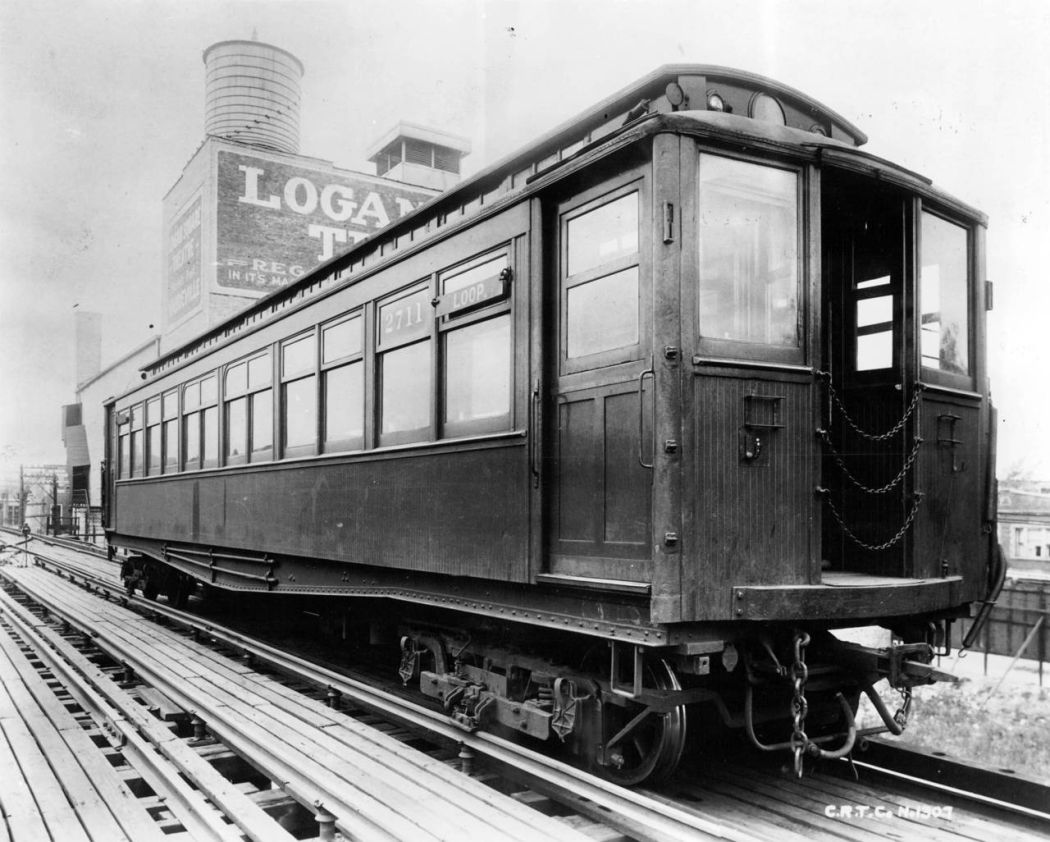
The honor of operating the world’s first electric elevated railway went to the Metropolitan West Side Elevated Railroad (operator of Garfield, Douglas and Logan-Humboldt Park routes) which began operation in 1895. The wood-steel cars purchased by the “Met” were originally built with open vestibules; however, this car was rebuilt with closed ends and air-operated doors to serve as a prototype for cars built after 1904. — Chicago Tribune historical photo

The elevated rapid transit line, which would become the Chicago Transit Authorities’ “L”, at Lake Street and Milwaukee Avenue was under construction in 1896. — Chicago Tribune historical photo
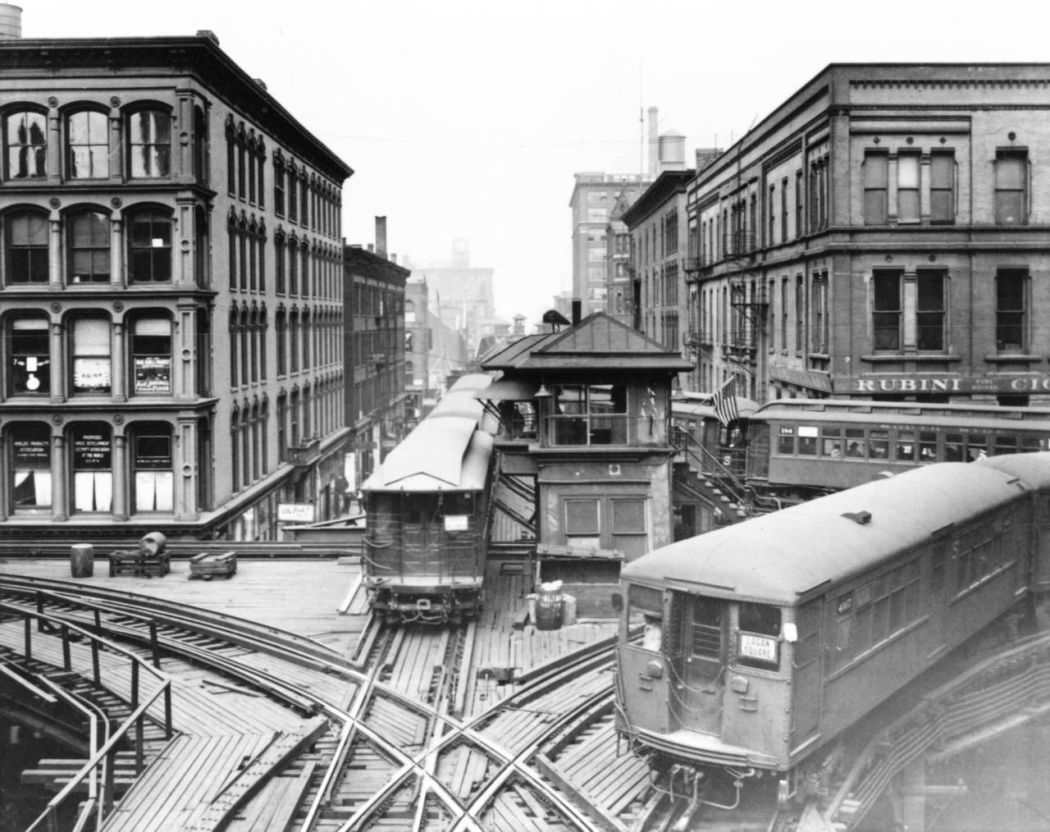
The CTA elevated trains at Lake and Wells Streets in 1919 Chicago. — Chicago Tribune historical photo
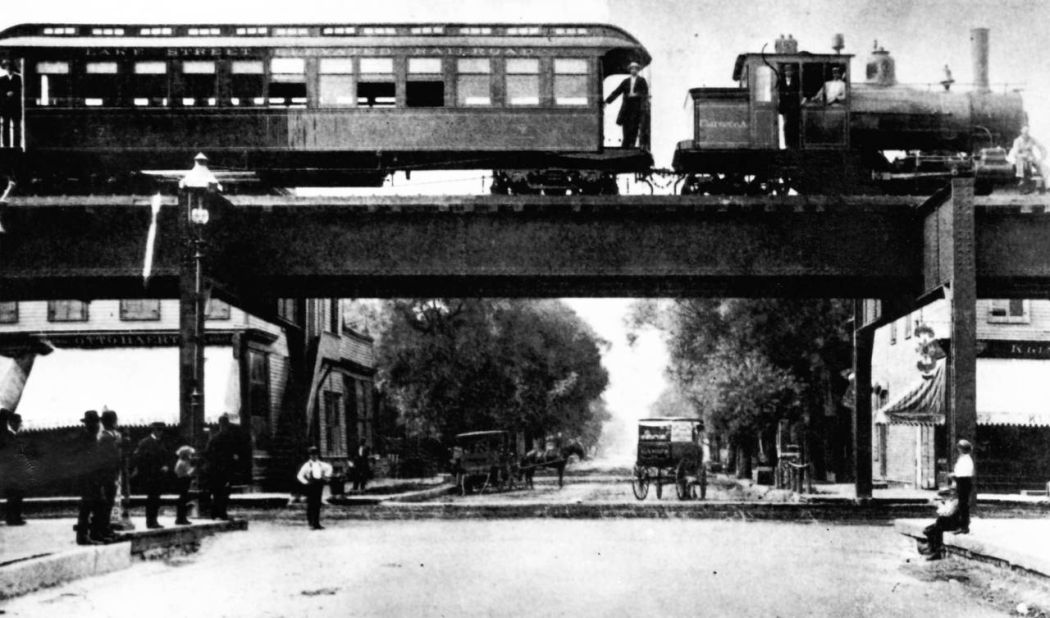
7 A steam power engine pulls the elevated train at the Lake Street “L”, circa 1893-1896. — Chicago Tribune historical photo

7 Elevated track and train, looking east on Van Buren Street from Wabash Avenue, in 1897 Chicago. — Chicago Tribune historical photo

The Englewood elevated train station at 63d and Halsted Streets, circa 1920, stood above the bustling street below. — Chicago Tribune historical photo
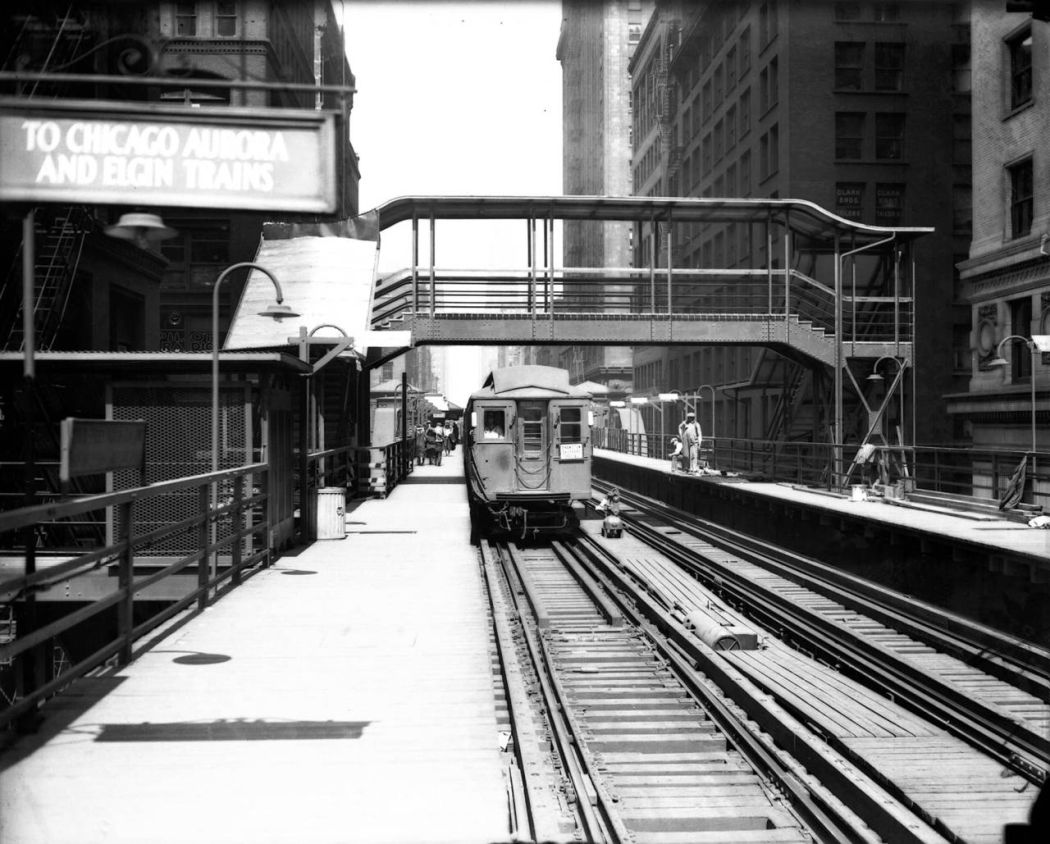
7 The new overhead transfer bridge at the Quincy-Wells “L” Station, circa April 20, 1931, was the 11th transfer bridge in the Loop. — Chicago Tribune historical photo
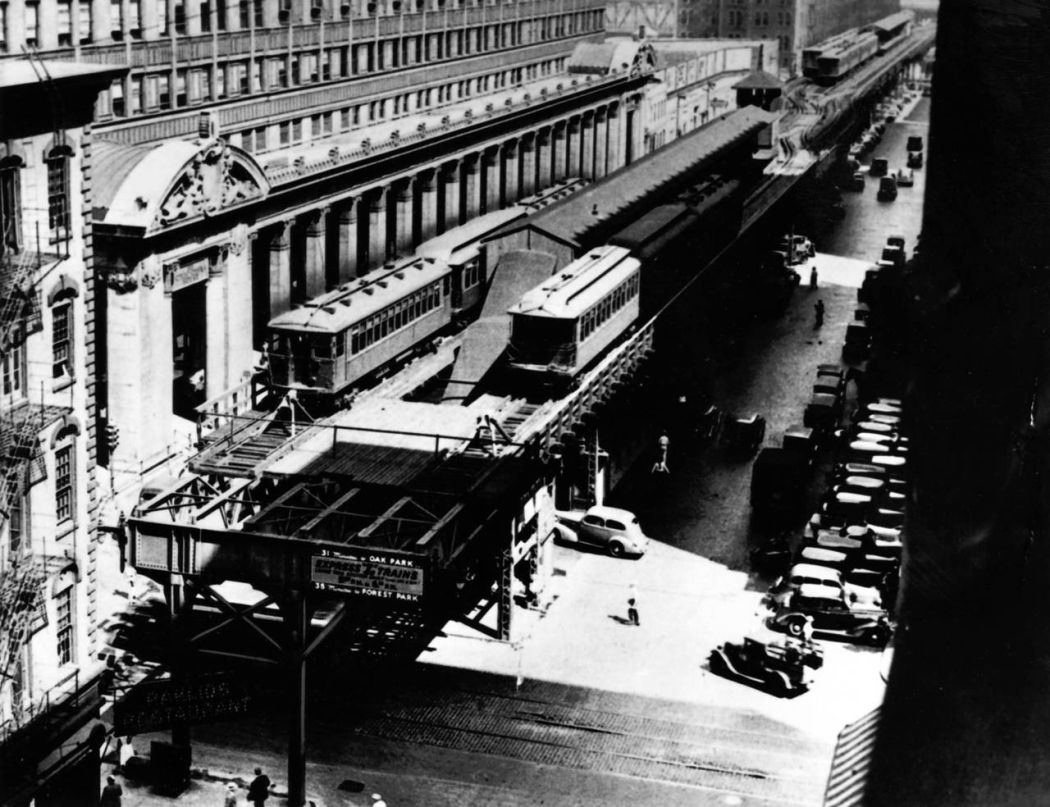
Looking north from Madison Street, the Market Street “L” ran in front of the Civic Opera House, marking the the end of the line in 1930. Market Street had originally been an industrial neighborhood, but when Chicago’s new Civic Opera House was built on the street, the area changed. The tracks were removed in 1948. — Chicago Tribune historical photo
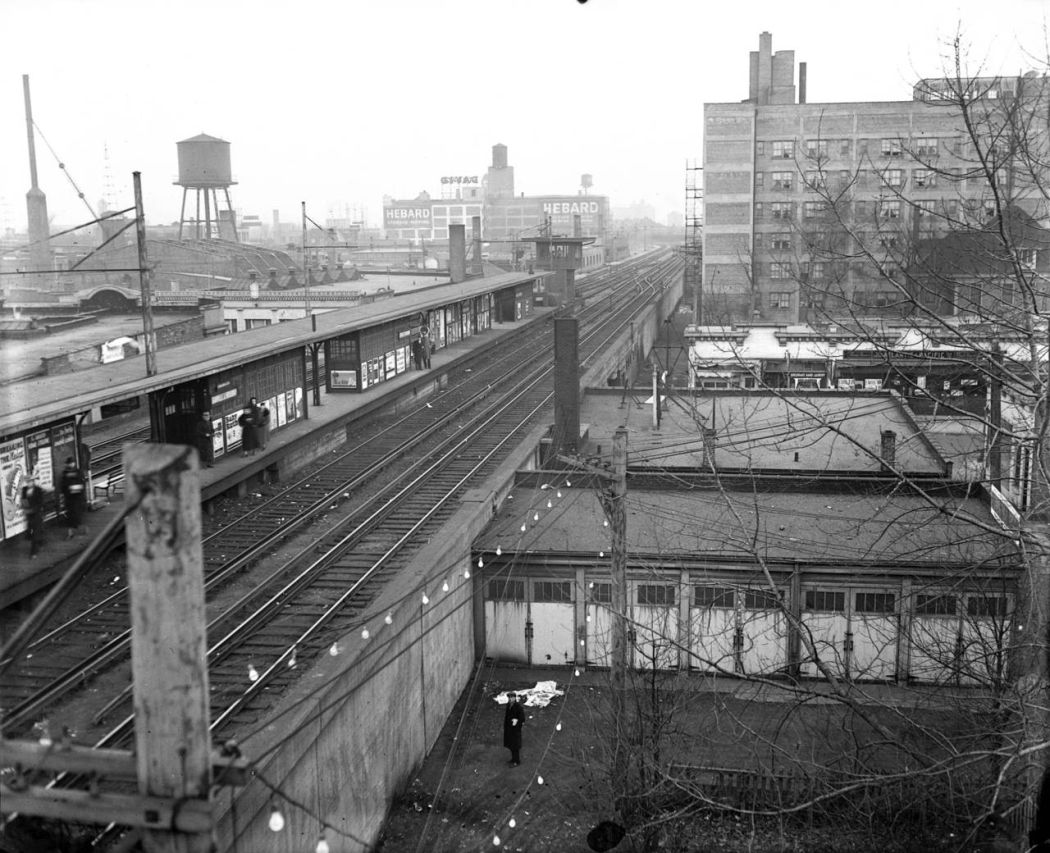
The Granville Avenue “L” Station where a North Shore Flyer ripped through the back end of a wooden coach, the Evanston Express elevated train car, on Nov. 24, 1936. The Evanston coach was sandwiched between two newer, steel trains. Eleven people were killed and 57 were injured. According to the Chicago Tribune, riders fell injured into the alley next to the tracks. This photo was taken after the crash, circa Nov. 30, 1936. — Chicago Tribune historical photo
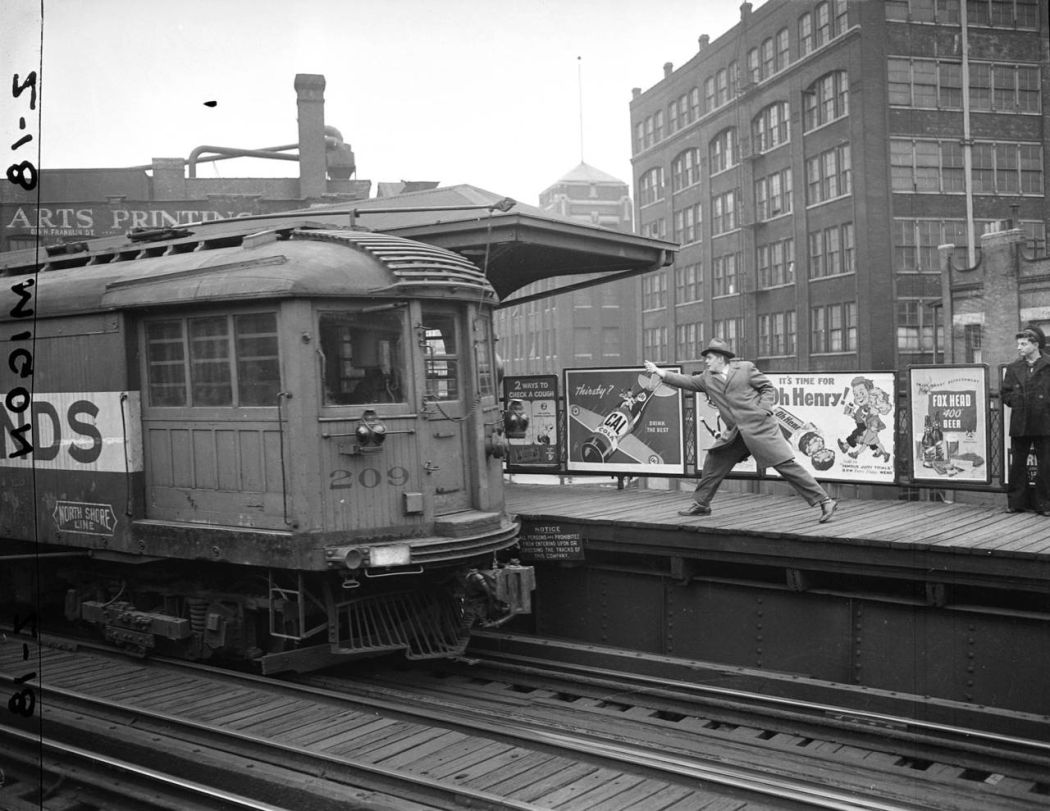
An unlucky man runs after the last “L” train on the Chicago Avenue platform before the strike shut down service on Oct. 24, 1945. 4,200 union employess from the Amalgamated Association of Street and Electric Railway employees (AFL) were on strike for two hours on Oct. 24 in a protest about not receiving back pay. — Chicago Tribune historical photo
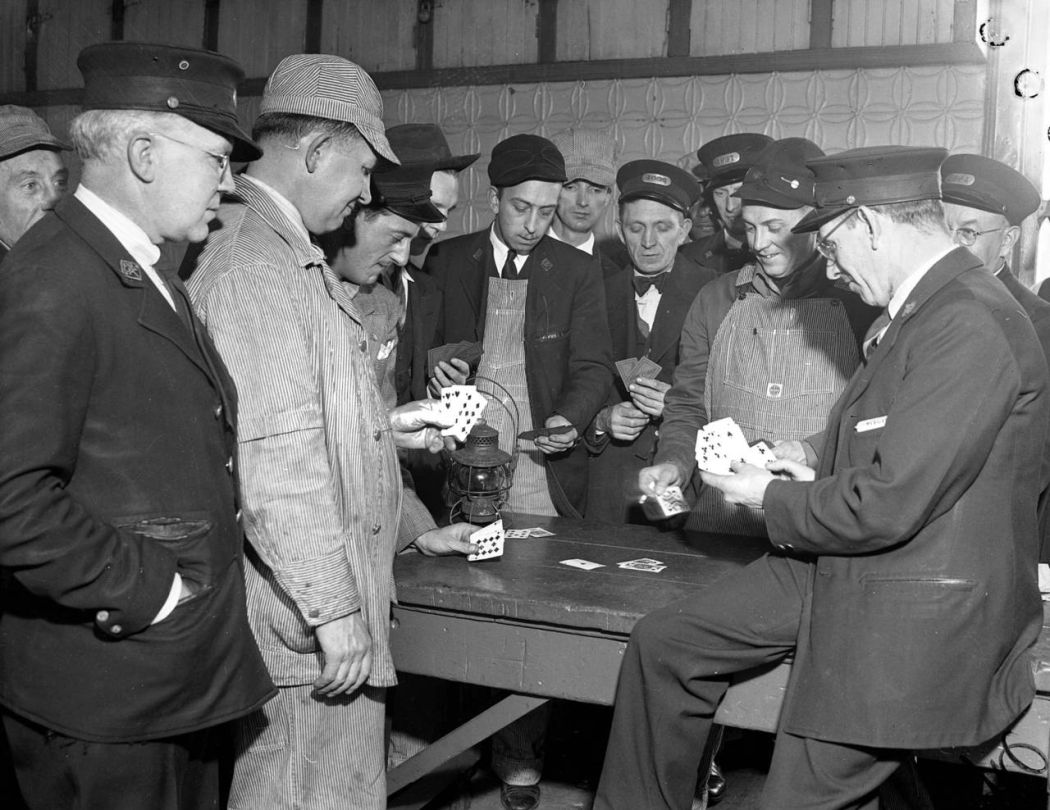
Motormen and conductors, also called gatemen, play cards in the train room at 61st and Calumet on Oct. 24, 1945 during an “L” strike. 4,200 union employess from the Amalgamated Association of Street and Electric Railway employees (AFL) were on strike for two hours on Oct. 24 in a protest about not receiving back pay. — Chicago Tribune historical photo
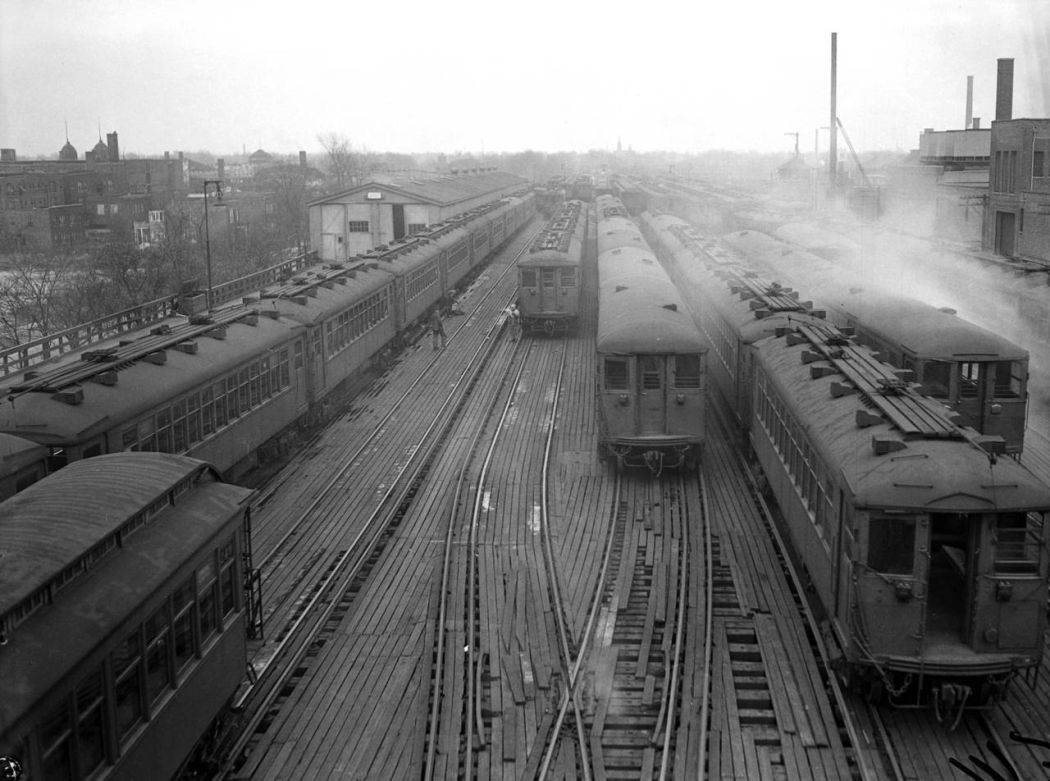
Looking south from 61st Street at “L” cars on Oct. 24, 1945. Calumet and 61street for story on strike. 4,200 union employess from the Amalgamated Association of Street and Electric Railway employees (AFL) were on strike for two hours on Oct. 24 in a protest about not receiving back pay. — Chicago Tribune historical photo

The Wilson Avenue terminal looking north, just north of Montrose Avenue from the repair building roof of the “L” line during the strike on Oct. 24, 1945. 4,200 union employess from the Amalgamated Association of Street and Electric Railway employees (AFL) were on strike for two hours on Oct. 24 in a protest about not receiving back pay. — Ray Rising/Chicago Tribune historical photo

7 “L” men take over the passenger seats and relax and smoke during the “L” strike on Oct. 24, 1945. 4,200 union employess from the Amalgamated Association of Street and Electric Railway employees (AFL) were on strike for two hours on Oct. 24 in a protest about not receiving back pay. — Ray Rising/Chicago Tribune historical photo

7 The Market Street elevated line stub, next to the Civic Opera House, was razed to make way for the Wacker Drive approach to the Congress Street highway. Workmen began salvaging parts of the tracks on April 12, 1948. — Chicago Tribune historical photo
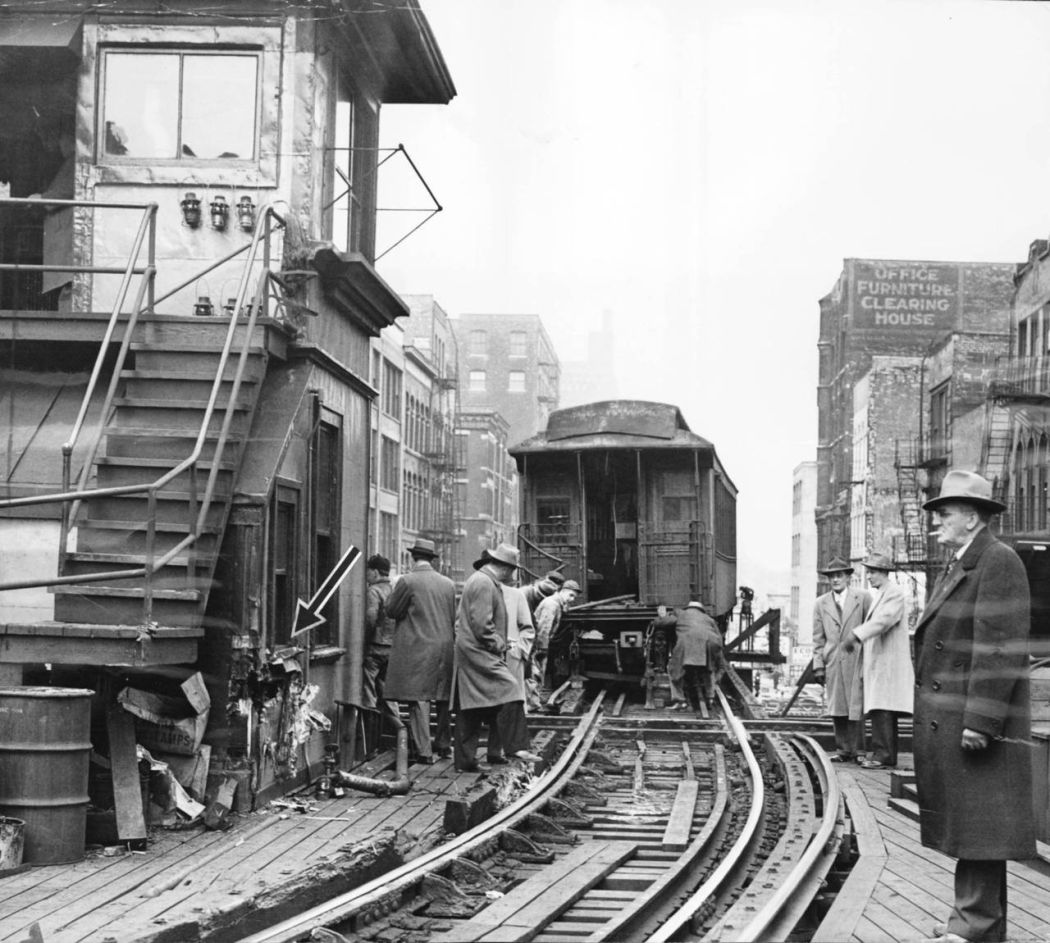
7 Looking west along the Lake Street elevated tracks from Wells Street after an “L” car derailed in 1951. The car scraped a corner of the signal tower (note the arrow) before coming to a stop. — Chicago Tribune historical photo
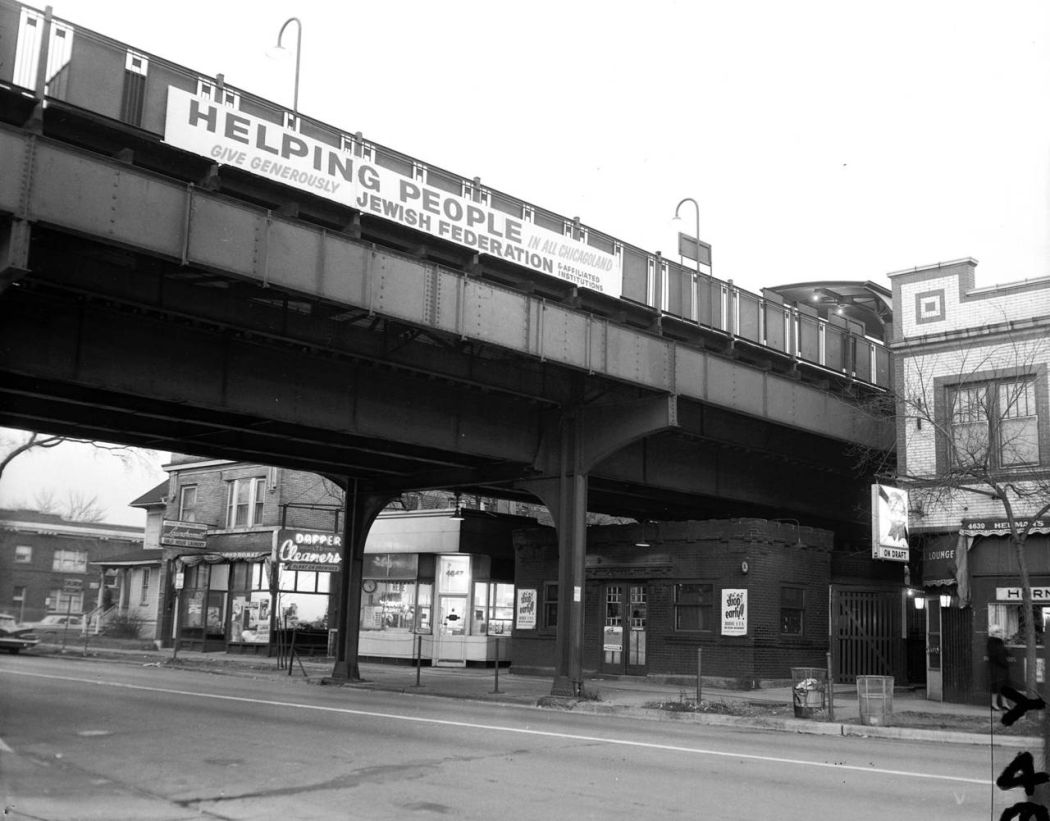
The Wilson Avenue Ravenswood “L” Station was to be torn down in 1963. This picture was taken on Dec. 12, 1963. — Chicago Tribune historical photo

Commuters wait for the Skokie Swift on the Howard Street “L” platform on April 20, 1964. — Chicago Tribune historical photo
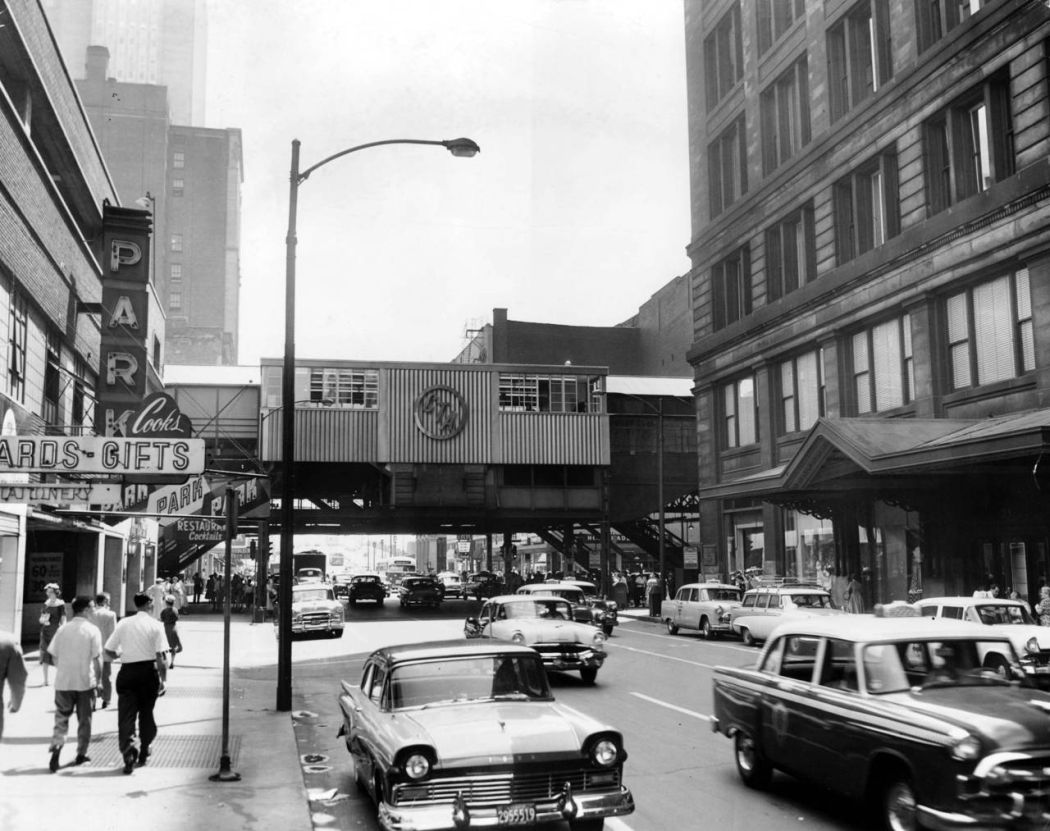
7 The new inner loop CTA station at Randolph Street and Wabash Avenue on June 17, 1957 was a joint CTA-Marshall Field & Co. project that cost $85,000. Marshall Field & Co. is on the right. — Chicago Tribune historical photo
via Chicago Tribune






